Introduction
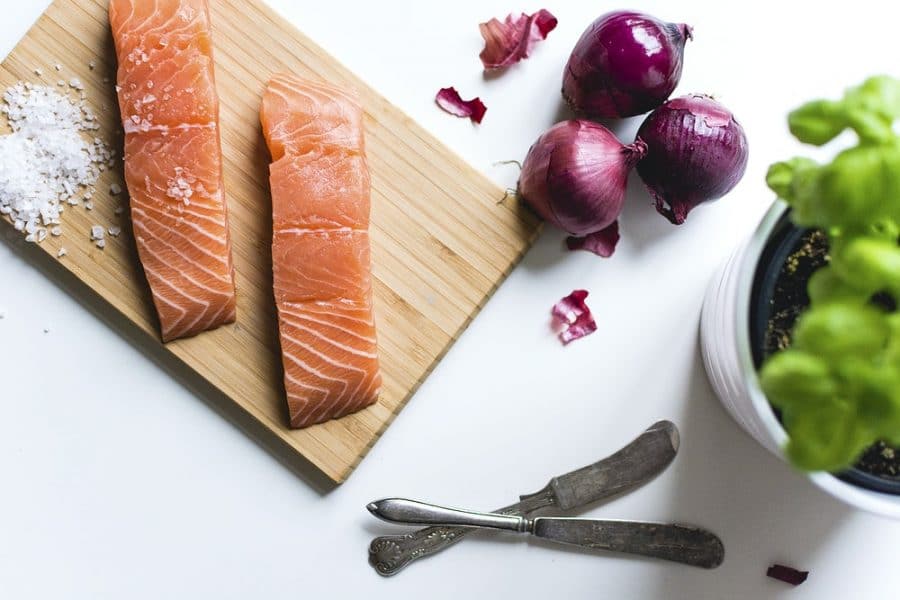
Raw salmon is a popular and widely consumed seafood delicacy around the world. It is typically enjoyed in various raw preparations such as sushi and sashimi. But what exactly does raw salmon taste like? This article delves into the sensory experience of eating raw salmon, including its appearance, texture, flavor profile, and culinary uses. Additionally, it discusses the health benefits of consuming raw salmon, as well as the necessary precautions and safety guidelines when handling and consuming this fish raw. So, if you’re curious about the taste and experience of raw salmon, keep reading to find out more.
Definition And Popularity Of Raw Salmon
Raw salmon refers to the uncooked flesh of the salmon fish, typically served in dishes like sushi and sashimi. It has gained immense popularity in the culinary world due to its delicate flavor, smooth texture, and versatile uses. Raw salmon is highly valued for its freshness and is often sought after by seafood enthusiasts and sushi lovers. Its popularity has spread worldwide, with many restaurants and sushi bars specializing in raw salmon preparations. The demand for raw salmon has grown significantly, indicating its widespread appeal and appreciation among food enthusiasts.
Health Benefits Of Consuming Raw Salmon
Consuming raw salmon offers numerous health benefits. One of the main advantages is its high content of omega-3 fatty acids, which are essential for overall well-being. These fatty acids have been linked to reducing inflammation, promoting heart health, and improving brain function. Additionally, raw salmon is a great source of protein, vitamins, and minerals, such as vitamin D, vitamin B12, and selenium. These nutrients play vital roles in supporting the immune system, promoting healthy skin, and boosting energy levels. Including raw salmon in your diet can contribute to a well-rounded and nutritious eating plan.
Appearance And Texture
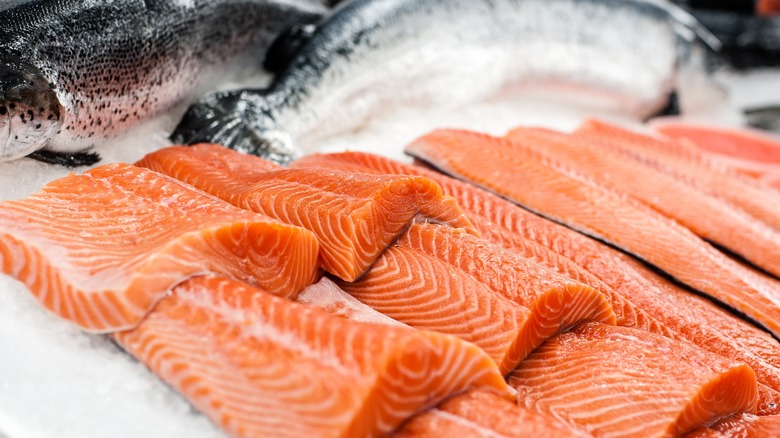
Raw salmon has a distinct appearance and texture. Its appearance is characterized by its vibrant pink color and glossy skin. The flesh of raw salmon is soft and has a smooth, almost buttery texture. When properly prepared, the texture should be moist and tender, with a slight resistance when chewed. This combination of appearance and texture contributes to the overall sensory experience of raw salmon, providing a visually appealing and satisfying mouthfeel.
Physical Characteristics Of Raw Salmon
Raw salmon has distinct physical characteristics that contribute to its overall appeal. Its vibrant pink color is a defining feature, ranging from pale pink to deep red, depending on the species and diet. The skin of raw salmon is glossy and smooth, adding to its visual allure. The flesh is soft and delicate, with a subtle marbling of fat that gives it a lustrous appearance. These physical attributes make raw salmon visually inviting and enticing to eat, especially when presented in various culinary preparations.
Texture And Mouthfeel Of Raw Salmon
Raw salmon has a unique texture and mouthfeel that sets it apart from cooked salmon. The flesh of raw salmon is tender, delicate, and almost buttery in texture. When bitten into, it offers a slight resistance before melting in the mouth. This silky smoothness adds to the overall sensory experience of eating raw salmon. The texture enhances the flavors, allowing the taste to linger and develop on the palate. The mouthfeel of raw salmon is often described as rich and velvety, making it a luxurious and indulgent choice for seafood enthusiasts.
Flavor Profile
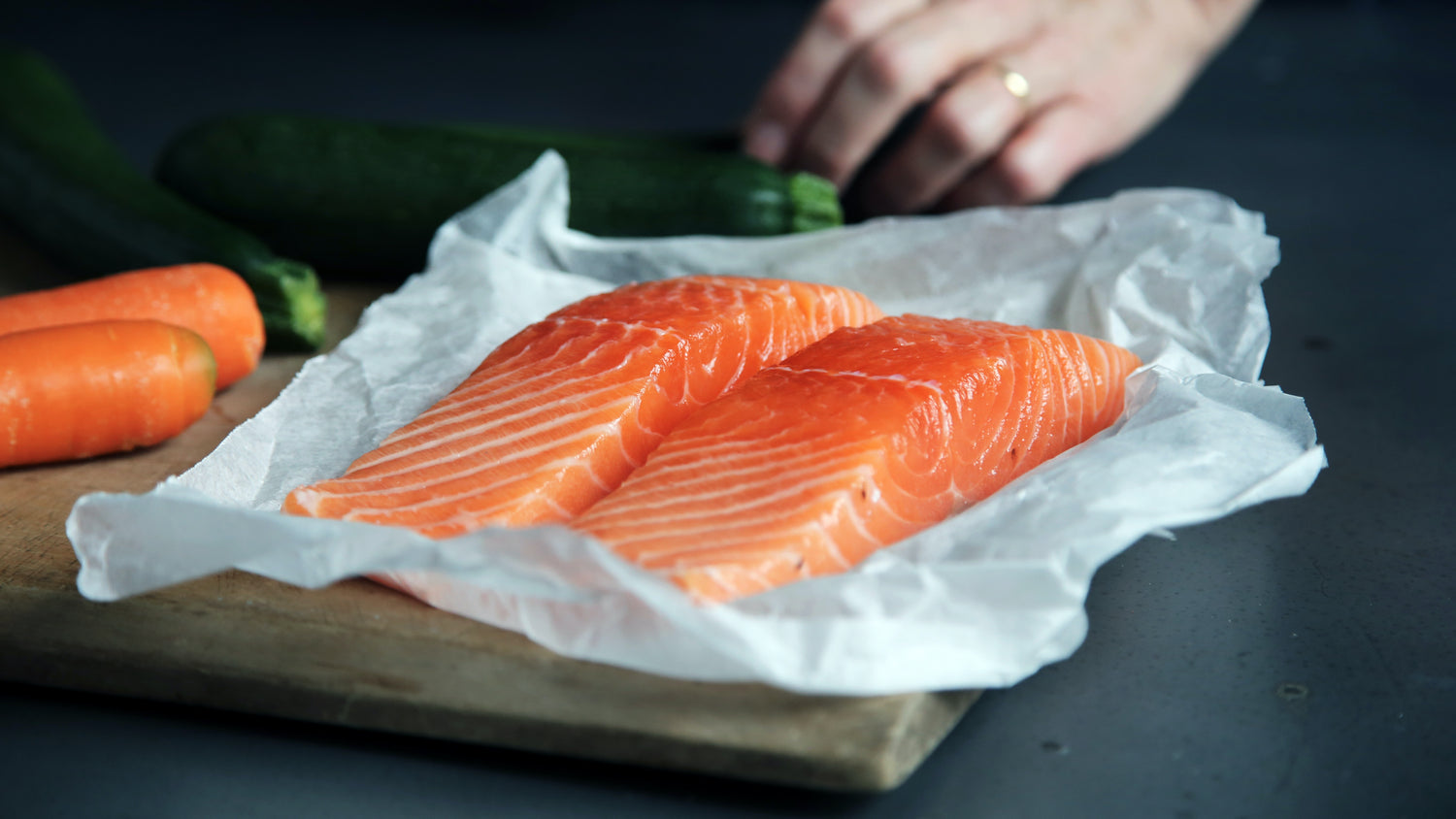
The flavor profile of raw salmon is often described as mild, delicate, and slightly sweet. It has a subtle umami taste, which is the savory fifth taste. The richness of the salmon’s fat content contributes to its flavor, providing a creamy and buttery sensation on the palate. The freshness of the fish also adds a hint of oceanic flavor. Overall, raw salmon offers a unique and enjoyable culinary experience for those who appreciate its subtle and well-balanced flavors.
Taste Evaluation Of Raw Salmon
The taste of raw salmon is often described as mild, delicate, and slightly sweet. Its flavor profile is enhanced by the subtle umami taste and the richness of its fat content, providing a creamy and buttery sensation on the palate. The freshness of the fish adds a hint of oceanic flavor, making it a unique culinary experience. Raw salmon is favored for its clean and refreshing taste, making it a popular choice for sushi and sashimi dishes. Its gentle flavor allows it to pair well with various ingredients and sauces, offering a versatile and enjoyable dining experience.
Aroma And Aftertaste Of Raw Salmon
The aroma of raw salmon is often described as fresh and slightly briny, reminiscent of the ocean. It has a pleasant and appetizing scent that adds to the overall sensory experience. As for the aftertaste, raw salmon leaves a subtle and lingering flavor on the palate. The richness of its fat content contributes to a creamy and buttery sensation, while the delicate sweetness and umami taste provide a pleasant finish. The aftertaste of raw salmon is often regarded as clean and refreshing, leaving a desire for another bite.
Culinary Uses
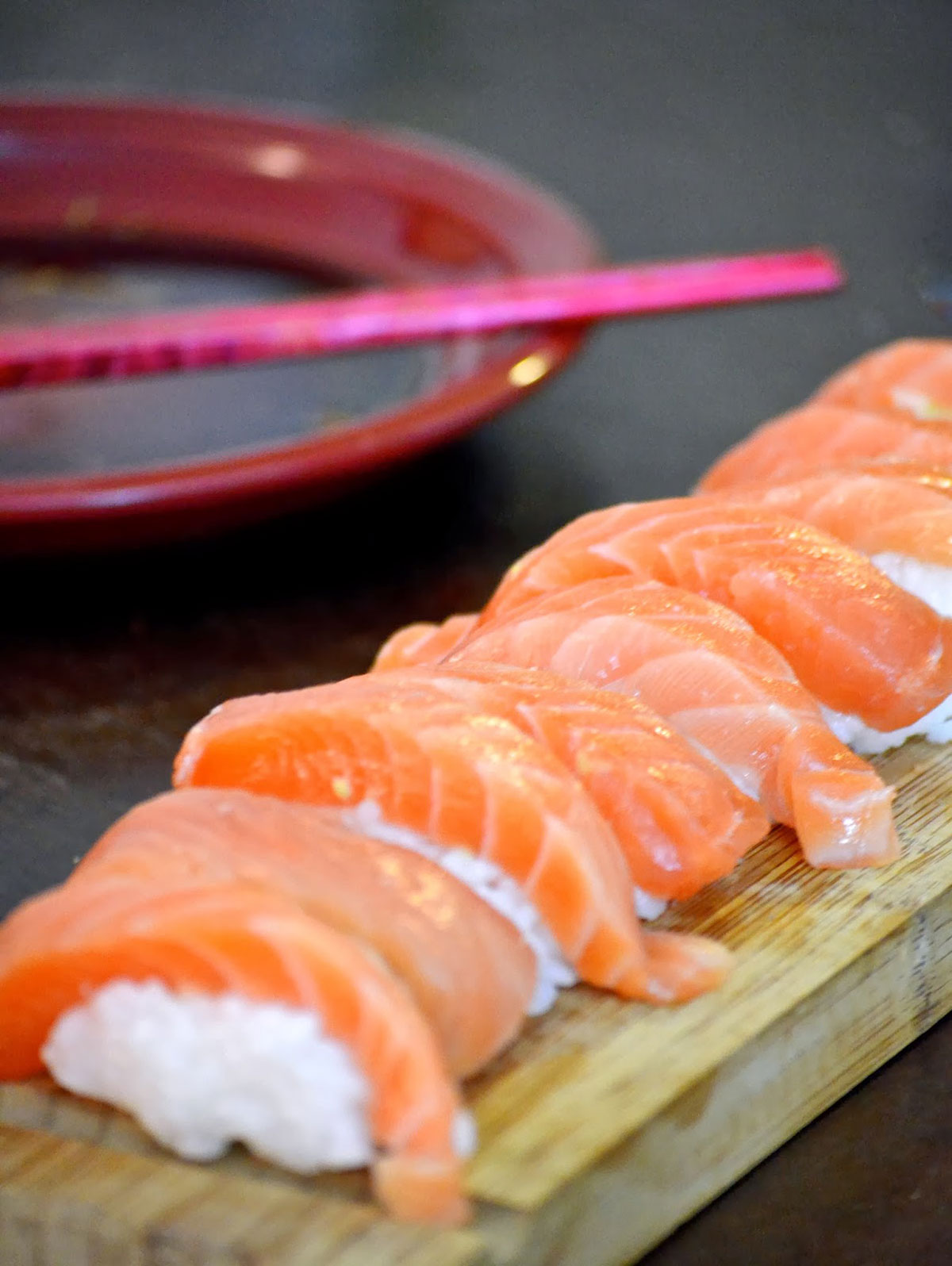
Raw salmon is a versatile ingredient with a wide range of culinary uses. In traditional cuisine, raw salmon is often used in preparations like sushi and sashimi, where it is showcased in its purest form. It can also be thinly sliced and added to salads or used as a topping for appetizers like bruschetta or crostini. Additionally, raw salmon can be marinated or cured to create dishes like gravlax or ceviche, which highlight the delicate flavors of the fish. The creamy and buttery texture of raw salmon makes it an excellent choice for creating elegant and flavorful dishes.
Traditional And Contemporary Dishes Involving Raw Salmon
Raw salmon is a versatile ingredient that is widely used in both traditional and contemporary dishes. In traditional cuisine, raw salmon is often featured in popular dishes like sushi and sashimi, where it is showcased in its purest form. It can also be thinly sliced and added to salads, used as a topping for appetizers like bruschetta or crostini, or incorporated into sushi rolls. In contemporary cuisine, chefs are continuously experimenting with new ways to use raw salmon, such as marinating or curing it to create dishes like gravlax or ceviche. The delicate and buttery texture of raw salmon makes it an excellent choice for creating elegant and flavorful dishes. [19]
Popular Sushi And Sashimi Preparations
Popular sushi and sashimi preparations often feature raw salmon as a highlight ingredient. In sushi, thin slices of raw salmon are commonly placed on top of a mound of vinegared rice, creating a delicate and visually appealing bite-sized piece. This classic preparation is known as nigiri sushi. Sashimi, on the other hand, showcases the pure flavor of raw salmon by serving it in thinly sliced pieces without rice. Sashimi can be enjoyed on its own or paired with soy sauce, wasabi, and pickled ginger for added flavor and texture. These preparations allow the natural taste and texture of raw salmon to take center stage. [23]
Safety And Precautions
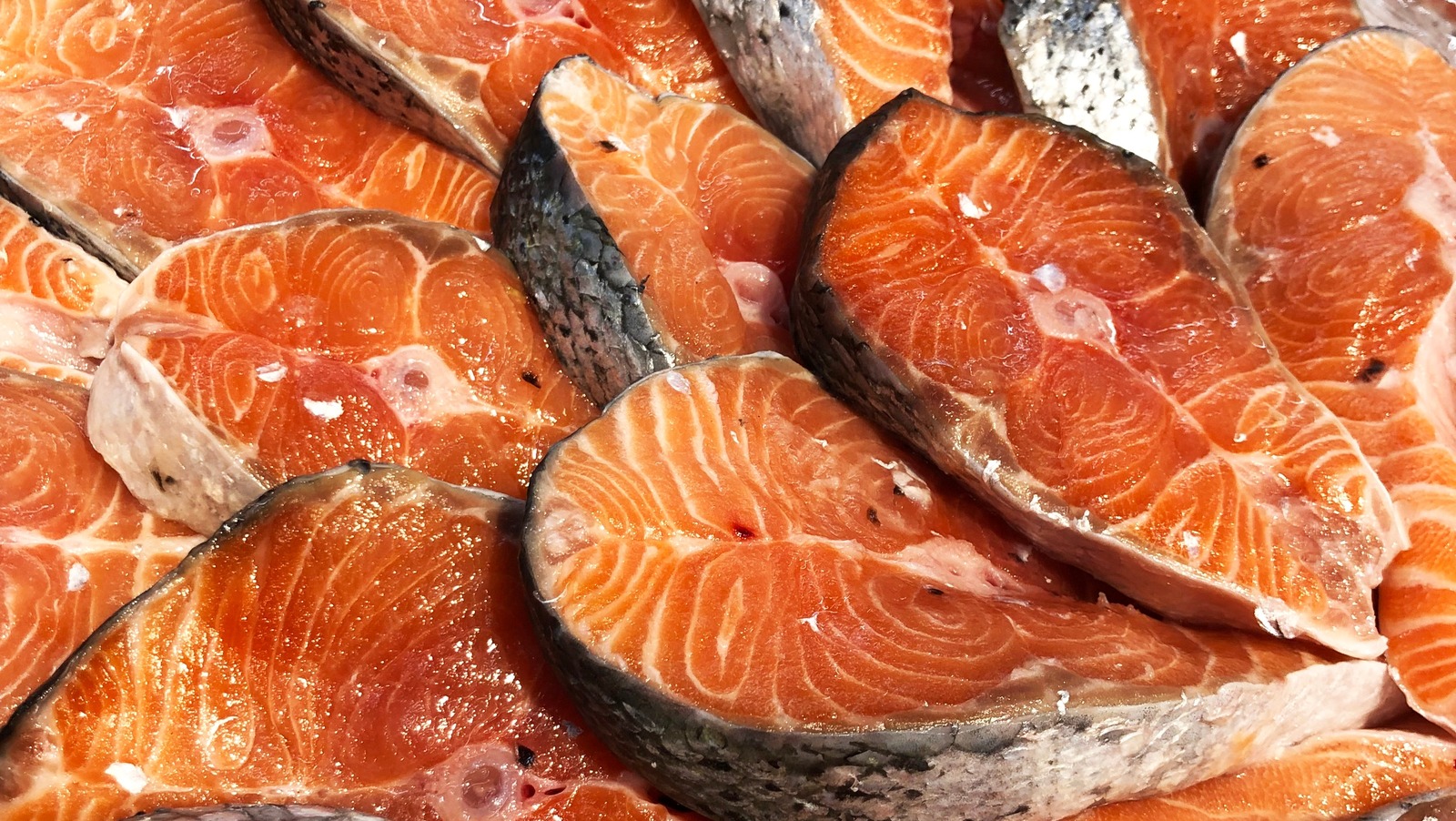
When consuming raw salmon, it is important to take certain safety precautions. Raw salmon can contain bacteria and parasites that may pose health risks if not handled or prepared properly. Here are some guidelines to ensure the safe consumption of raw salmon:
- Source: Purchase raw salmon from a reputable and trusted supplier to ensure freshness and quality.
- Storage: Keep raw salmon refrigerated at a temperature below 40°F (4°C) to prevent bacterial growth. Consume it as soon as possible to maintain freshness.
- Handling: Practice good hygiene by washing hands thoroughly before and after handling raw salmon. Use separate utensils and cutting boards for raw seafood to avoid cross-contamination with other foods.
- Freezing: Freezing raw salmon at -4°F (-20°C) for at least seven days can help kill any potential parasites. Thaw it in the refrigerator before consuming.
- Quality check: Examine the salmon for any signs of spoilage, such as a strong fishy smell, slimy texture, or discoloration. Discard if it appears spoiled.
- Allergies: Be aware of any allergies or sensitivities to raw seafood. Consult with a healthcare professional if you have any concerns.
By following these precautions, you can safely enjoy the sensory experience of raw salmon while minimizing the risk of foodborne illnesses.
Potential Risks And Precautions When Consuming Raw Salmon
Consuming raw salmon can pose potential health risks if not handled or prepared properly. Raw salmon may contain bacteria like Salmonella and parasites like tapeworms or roundworms, which can cause foodborne illnesses. These pathogens can lead to symptoms such as nausea, vomiting, diarrhea, and stomach pain. To minimize these risks, it is important to follow certain precautions. Purchase raw salmon from a reputable supplier, store it at a temperature below 40°F (4°C), practice good hygiene when handling, freeze it if necessary, and always check for signs of spoilage before consuming. By taking these precautions, the risk of foodborne illnesses can be significantly reduced.
Guidelines For Selecting And Handling Raw Salmon Safely
When selecting raw salmon, it is crucial to choose a reputable supplier to ensure its quality and freshness. Look for salmon that has clear, shiny skin and firm flesh. Avoid purchasing fish that has discolored patches, strong odor, or slimy texture. Proper handling is also important to reduce the risk of contamination. Store raw salmon in a refrigerator set below 40°F (4°C) and use it within 1-2 days of purchase. When preparing raw salmon, keep surfaces and utensils clean, and practice good hygiene. If unsure about the safety of the fish, freezing it at -4°F (-20°C) for at least 7 days can help kill potential parasites.
Conclusion

In conclusion, raw salmon offers a unique sensory experience with its mild and delicate taste, soft texture, and subtle umami flavor. It is a popular choice for sushi and sashimi dishes due to its freshness and versatility. However, it is important to exercise caution when consuming raw salmon, as it can contain harmful bacteria and parasites. By selecting and handling raw salmon safely, following proper storage and hygiene practices, and being aware of potential risks, individuals can safely enjoy the sensory delights that raw salmon has to offer.
Summary Of The Sensory Experience Of Raw Salmon
Raw salmon offers a unique sensory experience with its mild and delicate taste, soft texture, and subtle umami flavor. It has a fresh, clean taste that is slightly sweet and buttery. The texture of raw salmon is soft and tender, with a slight resistance when bitten into. Its appearance is visually pleasing, with its vibrant pink hue and glossy sheen. The aroma is fresh and oceanic, with a hint of sweetness. Overall, raw salmon provides a delightful sensory experience that is further enhanced when paired with complementary ingredients in sushi and sashimi preparations.
Personal Preferences And Considerations For Trying Raw Salmon
When it comes to trying raw salmon, personal preferences play a significant role. Some individuals may find the mild and delicate flavor of raw salmon to be enjoyable, while others may prefer cooked variations. It’s important to consider your own taste preferences and comfort level with consuming raw fish. Additionally, if you have any concerns about potential health risks or allergies, it’s essential to consult with a healthcare professional before trying raw salmon. Ultimately, the decision to try raw salmon should be based on personal preference and an understanding of any associated risks.
Frequently Asked Questions about the Taste of Raw Salmon
Q: What does raw salmon taste like?
A: Raw salmon has a unique taste that can be described as rich, buttery, and slightly fishy. The flavor of raw salmon can vary depending on factors such as its freshness, the type of salmon, and the way it is prepared.
Q: Is raw salmon safe to eat?
A: When handled and prepared correctly, raw salmon can be safe to eat. However, it is important to ensure that the salmon is fresh, properly sourced, and handled with hygiene in mind to minimize the risk of foodborne illnesses, such as salmonella or parasitic infections. It is recommended to consume raw salmon from reputable sources and to follow proper food safety guidelines.
Q: What is the texture of raw salmon like?
A: Raw salmon has a smooth and tender texture. It is softer than cooked salmon and may have a slightly gelatinous feel. The texture can vary depending on the specific cut of the fish.
Q: Can the taste of raw salmon be overpowering?
A: The taste of raw salmon can be intense for some individuals, especially if they are not accustomed to eating raw fish. The flavor can be rich and distinct, but it is generally well-balanced, with a creamy and somewhat sweet undertone. If you are unsure about raw seafood, it is best to try a small amount first to see if you enjoy the taste.
Q: How is raw salmon typically served?
A: Raw salmon is commonly served in dishes such as sushi, sashimi, and ceviche. It can also be thinly sliced and enjoyed as a topping for salads or used in poke bowls. Some people also enjoy marinating raw salmon to enhance its flavor.
Q: Are there any health benefits to eating raw salmon?
A: Raw salmon is an excellent source of omega-3 fatty acids, high-quality protein, and various essential vitamins and minerals. Omega-3 fatty acids have been linked to numerous health benefits, including improved heart health and brain function.
Q: Can the taste of raw salmon be altered with accompaniments?
A: Yes, the taste of raw salmon can be complemented or enhanced by various accompaniments or seasonings. Common additions include soy sauce, wasabi, pickled ginger, ponzu sauce, or citrus-based dressings. These accompaniments can add different layers of flavor and balance to the overall taste experience.
Q: Can raw salmon taste different depending on the type of salmon?
A: Yes, different types of salmon can offer slightly different flavors. For example, wild-caught salmon tends to have a stronger, more pronounced taste compared to farm-raised salmon. The diet, habitat, and quality of the fish can all influence the flavor profile.
Q: What are some alternative ways to enjoy salmon for those who do not like the taste of raw fish?
A: If you do not enjoy the taste of raw salmon, there are various alternative ways to enjoy this nutritious fish. Cooked salmon can be prepared in many delicious ways, such as grilling, baking, pan-searing, or poaching. These cooking methods can bring out different flavors and textures in the fish, catering to different taste preferences.
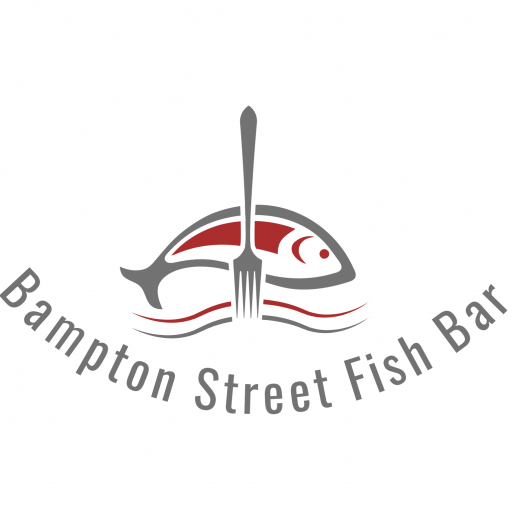
A small, independently run fish and chip shop using quality ingredients cooked freshly in our kitchen to ensure great tasting food. All of our drinks are in glass bottles, and all of our takeaway packaging is recyclable or compostable to help reduce our impact on the environment.